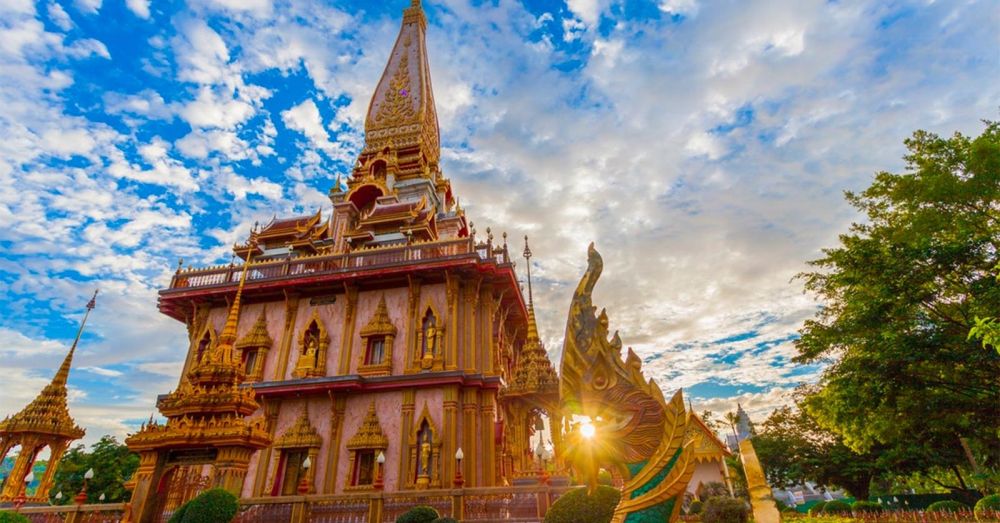

Wat Chalong, or formally known as Wat Chaiyathararam, is one of the most significant and revered landmarks in Phuket, Thailand. The temple complex is dedicated to two highly venerated monks, Luang Pho Chaem and Luang Pho Chuang, who led the citizens of Chalong in the fight against the Chinese rebellion in 1876, and reputedly aided the injured with their knowledge of herbal medicine.
The history of tourism at Wat Chalong goes back to the early 20th century when Phuket was known mostly for its tin mining industry rather than as a tourist destination. The temple served primarily as a spiritual centre for the local community. It wasn't until the latter half of the 20th century, with the decline of tin mining, that Phuket began to recognize the potential of its natural beauty and cultural heritage as drivers for tourism.
The 1980s marked a significant change with the development of Phuket as an international travel destination. As the island's beaches gained popularity, so did interest in Phuket's cultural and religious sites, including Wat Chalong. The temple's unique architectural style, intricate murals, and the Grand Pagoda housing a splinter of Lord Buddha's bone attracted both devout Buddhists and tourists seeking cultural experiences.
In more recent years, Phuket's tourism sector has seen continuous growth with a trend towards sustainable and experiential travel. Tourists visiting Wat Chalong today are interested in not just viewing the site, but understanding its spiritual significance, participating in temple ceremonies, and even engaging in meditation sessions offered by the monks.
Wat Chalong plays an integral role in Phuket's vibrant set of activities offered to travelers. During special festivals like the Chinese New Year and the Phuket Vegetarian Festival, the temple becomes a bustling hub of activity with colorful processions and cultural performances. Its continued reverence by the locals infuses authenticity to the visitor experience, cementing its place as a 'must-visit' destination on the island.
Moreover, Phuket's focus on cultural tourism has helped preserve Wat Chalong, ensuring its upkeep and maintenance for future generations. The government's inclusion of Wat Chalong in tourism promotion and cultural preservation initiatives helps in maintaining the temple as an exemplary site of Thailand's rich cultural tapestry for years to come.
With tourism evolving post-pandemic, there's an increased emphasis on crowd management and physical distancing. As such, Wat Chalong is implementing measures to ensure a safe and respectful environment for both worshippers and visitors. The future of tourism in Phuket, with Wat Chalong as a key player, appears to lean towards responsible tourism that balances the needs of the local community, the sustainability of the sites, and the quality of the visitor experience.
The story and influence of Wat Chalong on Phuket's tourism is a testament to the island’s ability to adapt and thrive in the changing landscape of global travel. As the industry moves forward, Wat Chalong continues to be a beacon of cultural integrity and a cornerstone of Phuket's tourist appeal.